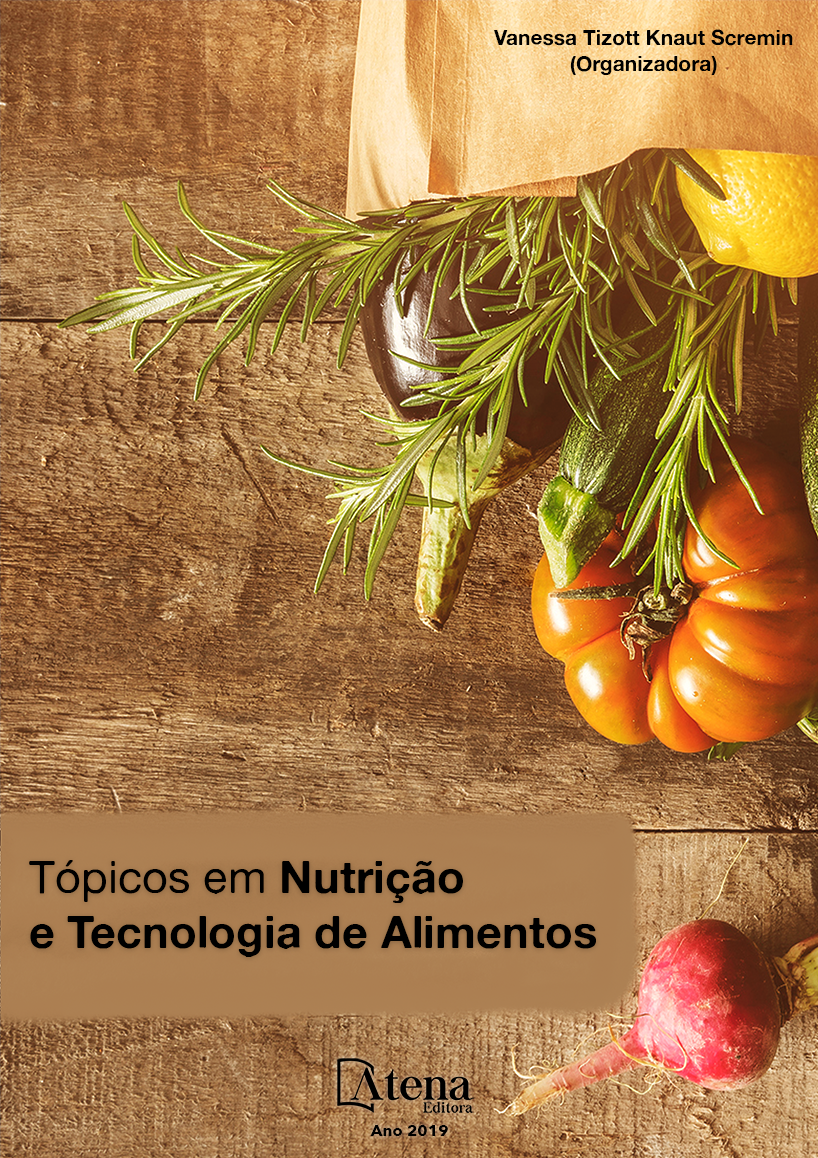
EFEITOS DA SUPLEMENTAÇÃO DE LICOPENO ISOLADO E NA MATRIZ ALIMENTAR SOB MARCADORES DE LESÃO HEPÁTICA DE RATAS ALIMENTADAS COM DIETA HIPERLIPÍDICA
O tecido hepático é essencial não só
para controle e homeostase do organismo, mas
também para reações metabólicas vitais à saúde
que podem ser desreguladas em processos
de lesão hepática (Schinoni, 2008). A alta
atividade energética do fígado acompanhado
de um padrão alimentar de uma dieta rica em
gorduras gera um consumo aumentado de
oxigênio, o que acarreta em elevada produção
de radicais livres envolvidos na fisiopatologia
de doenças inflamatórias e danos potenciais a
proteínas, lipídios e ao DNA celular (Halliwell &
Gutteridgr, 2000; Sies et al., 2005; Jaeschke et
al., 2000). Estudos vêm demonstrando a ação
de carotenóides na histopatologia do carcinoma
hepatocelular e na proteção do fígado devido
sua ação contra o estresse oxidativo (Kaklamani
et al., 1991; Yu et al, 2000; Silver et al., 2011;
Lau et al., 2005; Venturini et al., 2011). Portanto,
torna-se relevante estudar o tecido hepático
após tratamento com licopeno.
No entanto, como a maioria destes dados em
humanos ainda é pouco conclusivo, modelos
animais experimentais têm sido utilizados
para melhor compreensão dos mecanismos
de ação destes produtos. Neste sentido, o
objetivo deste trabalho foi avaliar os efeitos do
licopeno, isolado e na matriz alimentar, sobre a
função e integridade do fígado em modelos in
vivo, e elucidar os mecanismos de ação desse
carotenoide sob marcadores de lesão hepática.
EFEITOS DA SUPLEMENTAÇÃO DE LICOPENO ISOLADO E NA MATRIZ ALIMENTAR SOB MARCADORES DE LESÃO HEPÁTICA DE RATAS ALIMENTADAS COM DIETA HIPERLIPÍDICA
-
DOI: 10.22533/at.ed.7181912035
-
Palavras-chave: licopeno, lesão hepática, estresse oxidativo, antioxidantes
-
Keywords: lycopene, liver injury, oxidative stress, antioxidants
-
Abstract:
Liver tissue is essential not
only for the control and homeostasis of the
organism, but also for metabolic reactions vital
for health that can be unregulated in hepatic
injury processes (Schinoni, 2008). The high
energetic activity of the liver accompanied by an
alimentary pattern of a diet rich in fats generates
an increased consumption of oxygen, which
causes high production of free radicals involved
in the pathophysiology of inflammatory diseases
and potential damages to proteins, lipids and
cellular DNA (Halliwell & Gutteridgr, 2000; Sies
et al., 2005; Jaeschke et al., 2000). Studies
have demonstrated the action of carotenoids on
the histopathology of hepatocellular carcinoma
and on liver protection due to their action against oxidative stress (Kaklamani et al.,
1991, Silver et al., 2011, Lau et al. 2005; Venturini et al., 2011). Therefore, it becomes
relevant to study hepatic tissue after treatment with lycopene. However, as most of
these data in humans are still inconclusive, experimental animal models have been
used to understand better the mechanisms of action of these products. In this sense,
the objective of this work was to evaluate the effects of lycopene, isolated and in the
matrix food, on function and integrity of the liver in vivo models, and elucidate the
mechanisms of action of this carotenoid under markers of liver injury
-
Número de páginas: 15
- Monique de Barros Elias Campos
- Vanessa Azevedo de Jesuz
- Anderson Junger Teodoro
- Vilma Blondet de Azeredo


